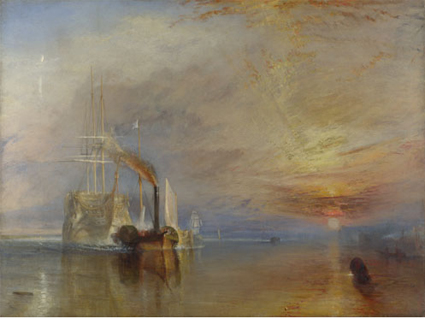What was Turner saying in 'The Fighting Temeraire'? Was he harking back to a pre-industrial age? Or was he, at 64, rounding the last bend of the river? By Andrew Graham-Dixon
JMW Turner officially titled his most celebrated work The Fighting Temeraire but in private he called it by another name: "My Darling." A new exhibition at the National Gallery investigates the subtle bonds of love between painter and painting. It also suggests that, like many of the great monuments of art, The Fighting Temeraire was most clumsily manhandled by the people who set it on its pedestal in the first place.
The painting shows a superannuated English warship from Nelson's Trafalgar fleet, making her last journey down the Thames, pulled by a black tug through waters the colour of gold and precious stones, lit by the flare of an autumn sunset. It is a beautiful but complicated object. Painted more than 20 years after the end of the Napoleonic Wars, it is Turner's melancholy tribute to a glorious moment in the nation's past: Rule Britannia sung in a minor key. But it is also more than that. It is a work of disguised autobiography: a painting that reconciles some of the selves Turner still felt striving within him, even in the last and most radiant phase of his creative life.
Two big mistakes have been made about the nature of the painting. The first concerns its origins. The starting point for the picture has always seemed somewhat uncertain, partly because Walter Thornbury, Turner's first and most eccentrically inventive biographer, was himself so definite on the subject: "In 1838 Turner was with Clarkson Stanfield and a party of brother artists on one of those holiday excursions in which he is so delighted. Suddenly there moved down upon the artists' boat...


